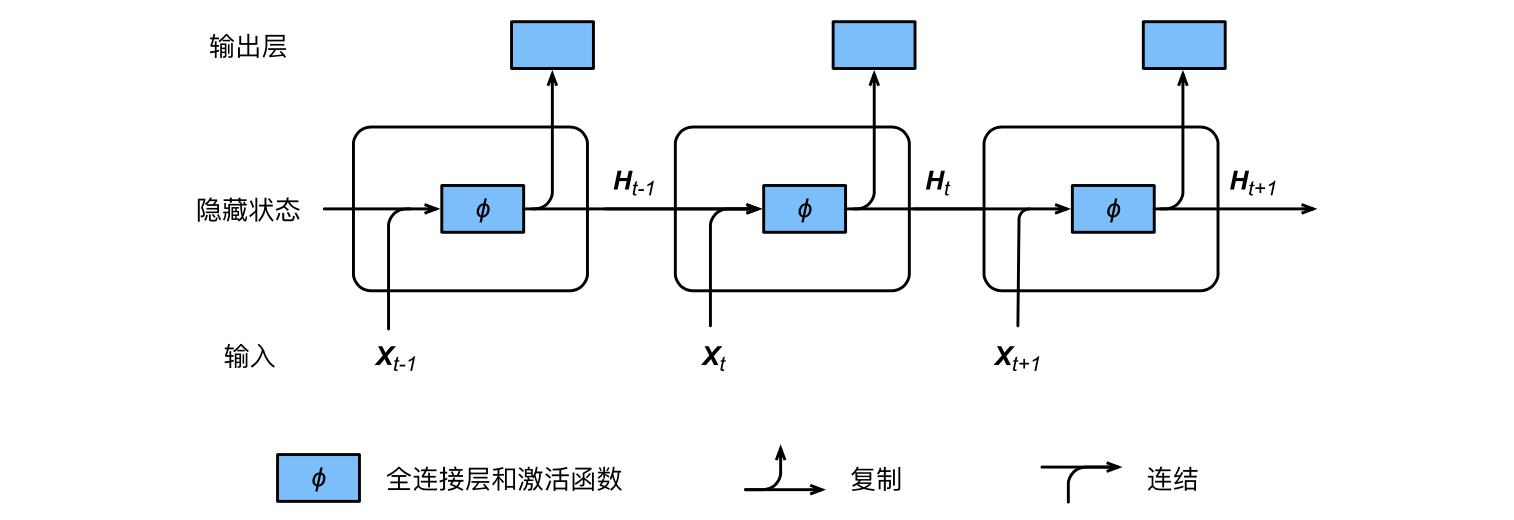PyTorch学习笔记(二)
PyTorch学习笔记(二)
dimension:0行 1列
张量操作
torch.cat
1 | torch.cat(inputs, dimension=0) → Tensor |
在给定维度上对输入的张量序列seq进行连接操作。
torch.cat()可以看做 torch.split() 和 torch.chunk()的反操作。 cat() 函数可以通过下面例子更好的理解。
参数:
- inputs (sequence of Tensors) – 可以是任意相同Tensor 类型的python 序列。
- dimension (int, optional) – 沿着此维连接张量序列。
例子:
1 | >>> x = torch.randn(2, 3) |
torch.chunk
1 | torch.chunk(tensor, chunks, dim=0) |
在给定维度(轴)上将输入张量进行分块儿。
参数:
- tensor (Tensor) – 待分块的输入张量
- chunks (int) – 分块的个数
- dim (int) – 沿着此维度进行分块
torch.gather
1 | torch.gather(input, dim, index, out=None) → Tensor |
沿给定轴dim,将输入索引张量index指定位置的值进行聚合。
参数:
- input (Tensor) – 源张量
- dim (int) – 索引的轴
- index (LongTensor) – 聚合元素的下标
- out (Tensor, optional) – 目标张量
对一个3维张量,输出可以定义为:
1 | out[i][j][k] = tensor[index[i][j][k]][j][k] # dim=0 |
例子:
1 | >>> t = torch.Tensor([[1,2],[3,4]]) |
dim=1
i=0,j=0
out[0][0]=input[0,index[0][0]]=input[0,0]=1
i=0,j=1
out[0][1]=input[0,index[0][1]]=input[0,0]]=1
i=1,j=0
out[1][0]=input[1,index[1][0]]=input[1,1]]=4
i=1,j=1
out[1][1]=input[1,index[1][1]]=input[1,0]]=3
torch.index_select
1 | torch.index_select(input, dim, index, out=None) → Tensor |
沿着指定维度对输入进行切片,取index中指定的相应项(index为一个LongTensor),然后返回到一个新的张量, 返回的张量与原始张量Tensor有相同的维度(在指定轴上)。
注意: 返回的张量不与原始张量共享内存空间。
参数:
- input (Tensor) – 输入张量
- dim (int) – 索引的轴
- index (LongTensor) – 包含索引下标的一维张量
- out (Tensor, optional) – 目标张量
例子:
1 | >>> x |
dim=0,[0,2]:取第0和第1行。
dim=1,[0,2]:取第0和第1列。
torch.masked_select
1 | torch.masked_select(input, mask, out=None) → Tensor |
根据掩码张量mask中的二元值,取输入张量中的指定项(mask为一个 ByteTensor),将取值返回到一个新的1D张量,张量mask须跟input张量有相同数量的元素数目,但形状或维度不需要相同。
注意: 返回的张量不与原始张量共享内存空间。
参数:
- input (Tensor) – 输入张量
- mask (ByteTensor) – 掩码张量,包含了二元索引值
- out (Tensor, optional) – 目标张量
torch.nonzero
1 | torch.nonzero(input, out=None) → LongTensor |
返回输入张量中的非零元素的索引。
如果输入input有n维,则输出的索引张量output的形状为 z x n, 这里 z 是输入张量input中所有非零元素的个数。
参数:
- input (Tensor) – 源张量
- out (LongTensor, optional) – 包含索引值的结果张量
例子:
1 | >>> torch.nonzero(torch.Tensor([1, 1, 1, 0, 1])) |
torch.split
1 | torch.split(tensor, split_size, dim=0) |
将输入张量分割成相等形状的chunks(如果可分)。 如果沿指定维的张量形状大小不能被split_size 整分, 则最后一个分块会小于其它分块。
参数:
- tensor (Tensor) – 待分割张量
- split_size (int) – 单个分块的形状大小
- dim (int) – 沿着此维进行分割
torch.squeeze
1 | torch.squeeze(input, dim=None, out=None) |
输入张量形状中的1去除并返回。 如果输入是形如(A×1×B×1×C×1×D),那么输出形状就为:(A×B×C×D)
当给定dim时,那么挤压操作只在给定维度上。例如,输入形状为: (A×1×B), squeeze(input, 0) 将会保持张量不变,只有用 squeeze(input, 1),形状会变成 (A×B)。
注意: 返回张量与输入张量共享内存,所以改变其中一个的内容会改变另一个。
参数:
- input (Tensor) – 输入张量
- dim (int, optional) – 如果给定,则input只会在给定维度挤压,若不给定,在所有维度挤压。
- out (Tensor, optional) – 输出张量
例子:
1 | >>> x = torch.zeros(2,1,2,1,2) |
torch.stack
1 | torch.stack(sequence, dim=0) |
沿着一个新维度对输入张量序列进行连接。 序列中所有的张量都应该为相同形状。
参数:
- sqequence (Sequence) – 待连接的张量序列
- dim (int) – 插入的维度。必须介于0与待连接的张量序列数之间。
torch.t
1 | torch.t(input, out=None) → Tensor |
输入一个矩阵(2维张量),并转置0, 1维。 可以被视为函数transpose(input, 0, 1)的简写函数。
参数:
- input (Tensor) – 输入张量
- out (Tensor, optional) – 结果张量
例子:
1 | >>> x = torch.randn(2, 3) |
torch.transpose
1 | torch.transpose(input, dim0, dim1, out=None) → Tensor |
返回输入矩阵input的转置。交换维度dim0和dim1。 输出张量与输入张量共享内存,所以改变其中一个会导致另外一个也被修改。
参数:
- input (Tensor) – 输入张量
- dim0 (int) – 转置的第一维
- dim1 (int) – 转置的第二维
例子:
1 | >>> x = torch.randn(2, 3) |
torch.unbind
1 | torch.unbind(tensor, dim=0) |
移除指定维后,返回一个元组,包含了沿着指定维切片后的各个切片。
参数:
- tensor (Tensor) – 输入张量
- dim (int) – 删除的维度
torch.unsqueeze
1 | torch.unsqueeze(input, dim, out=None) |
返回一个新的张量,对输入的制定位置插入维度 1。
注意: 返回张量与输入张量共享内存,所以改变其中一个的内容会改变另一个。
如果dim为负,则将会被转化dim+input.dim()+1
参数:
- tensor (Tensor) – 输入张量
- dim (int) – 插入维度的索引
- out (Tensor, optional) – 结果张量
例子:
1 | >>> x = torch.Tensor([1, 2, 3, 4]) |




